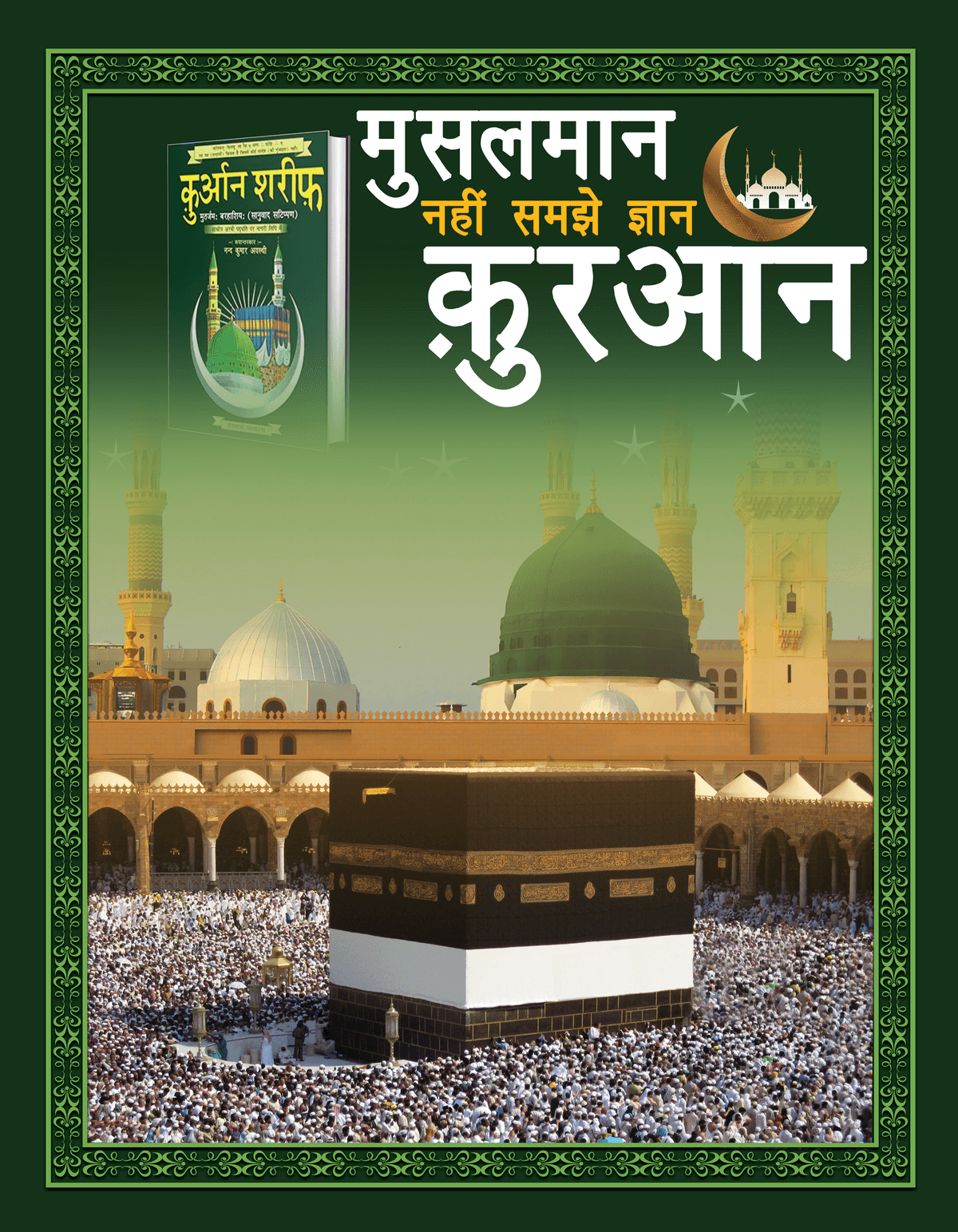
Question: - What is the definition of Moksh (salvation) and how is Moksh (salvation) attained?
Answer: - Moksh means "liberation/salvation". Getting freedom of any bondage is called attainment of Moksh (salvation). For example, a parrot was kept in a cage. It was in a bondage. When the parrot was freed from the cage, it became free from bondage.
In the spiritual path, salvation and bondage are as follows: -
The living being is bound by the bondage of (karmas) actions. Due to which he is suffering by being trapped in the labyrinth of birth and death. This is a bondage. Becoming free from this bondage of (karmas) actions is the attainment of salvation. All the living beings who are in the world of Kaal Jyoti Niranjan are bound by the bondage of (karmas) actions. Whatever action, good or bad, a living being performs, he will definitely get its result. It is necessary for those, who perform acts of worship on the basis of the knowledge given by the (Rasool) messengers of Kaal Brahm (Jyoti Niranjan), to acquire a guru. By worshipping as instructed by the Guruji, those worshippers of Kaal Brahm will surely go to heaven (Jannat) and hell (Jahannam), because in the world of Kaal Brahm, both types of karmas (sins and virtues) have to be finished only by experiencing them. A Guru inspires his disciple (male/female) to avoid sinful deeds and to do virtuous deeds. Due to which, the follower of Guru ji attains more virtues. Therefore, when he leaves the world, he gets more time to stay in heaven (Jannat), which is the reward of virtues. After the period of heaven is over, that worshipper also goes to hell and suffers the punishment of (karmas) deeds in the bodies of other beings on the Earth. Then he gets a human (male / female) birth. Whatever (karmas) deeds he performs in that human life, he will again get the aforesaid result of the (karmas) deeds. This cycle will continue forever.
These devotees of Kaal Brahm consider the period of residence in heaven (Jannat) to be salvation, which is limited. This period of salvation can be as long as four yugas (Satyug, Tretayug, Dwaparyug and Kalyug) i.e., forty-three lakh twenty thousand years. This is the duration of the four Yugas (eras); it is also called Chaturyug. This salvation period can be of one thousand Chaturyugas, which is the duration of one day of Brahma ji (Rajgun god).
Some sages have also attained Brahmlok (the Great Heaven of Kaal Lok) i.e., Mahaswarg. They resided in it for several thousand Chaturyugas. They attained salvation for a longer period. They too have come back in the cycle of birth and death. They have also lived the lives of animals and birds. They have also suffered in the hell (Jahannam). These sages had performed the act of worship described in the Vedas. Gita also has the same knowledge as the Vedas. There is a provision in the Vedas to perform five yagyas (religious rituals) and to chant the Om (ॐ) mantra. Some sage performed all the five yagyas, some performed four, some performed two or one. They chanted the Om mantra. On that basis, they got less and more time of salvation.
The kingdom of heaven is also attained by doing penance and hath yog. The one who does penance gets the fruit of penance from kingship. One becomes Indra, the king of heaven, by doing penance. Hundred mounds (there are 40 kilograms in one mound) of (desi ghee) clarified butter has to be used in one yagya. By performing a hundred such yagyas, one attains the position of Indra, but the duration is limited. Thereafter, there is death there too. Then the cycle of birth and death continues. This is temporary salvation. Those who do not have complete spiritual knowledge consider going to heaven to be salvation. This is temporary salvation.
The place Satlok, which is the abode of Satpurush (Kaadir Allah), where He has his throne, is an eternal place. Satpurush (Param Akshar Brahm) Kabir is also immortal. Those who perform true worship of Satpurush Kabir go to that immortal place (Satyalok). They never return to the world again. They remain happy there forever. They get an immortal body. This is complete salvation. This is salvation in the true sense.
Jyoti Niranjan (Kaal Brahm) is also the giver of the knowledge of the Bible and the Quran. In these, the method of worship is even more incomplete than the Gita and the Vedas. Even the way of worship mentioned in them cannot lead to complete salvation.
